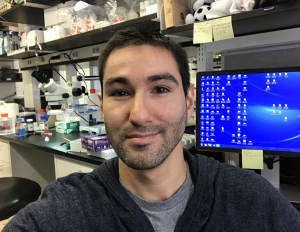Machine Learning & Impaired Spatial Decoding in AD Mice
Principal Investigator
Mentors
Project Goals
Complex information processing in the brain is possible due to the combined strength and diverse talents of large numbers of neurons working together. In mouse models of Alzheimer’s disease (AD) pathology, amyloid beta (Aβ) leads to overactive neuron signaling and poor spatial information processing, which may be aggravated by tau build-up. Using sophisticated recording techniques, we will measure the content and quality of spatial information transmitted by large numbers of neurons in brains containing Aβ and tau pathology. Dysfunctional neuronal populations will be selectively targeted to correct their overactive firing patterns, with the overall goal of improving the quality of spatial information carried by large numbers of neurons.
Project Summary
While considerable evidence exists to support the notion that amyloid beta (Aβ) and tau pathology negatively impact spatial learning and memory in Alzheimer’s disease, few studies have tested their direct influence on spatial computation within affected neuronal populations, resulting in an information gap at the neuronal network level. Thus, the overall goal of this project is to bridge this gap by offering a greater functional understanding of Alzheimer’s disease-related cognitive impairment and the underlying pathology.
In this proposal, I will utilize recent advances in machine learning to better understand how early pathological accumulation of Aβ and tau interfere with encoding of spatial information in the entorhinal cortex of aged, transgenic mice. The entorhinal cortex plays a critical role in spatial representation, navigation and learning & memory, and is particularly vulnerable to Alzheimer’s disease pathology. Neuronal recordings will be performed in awake, behaving mice as they navigate several contextually unique environments. Machine learning strategies will then be used to decode features of task-relevant, spatial information from neural ensemble activity in the entorhinal cortex. Dysfunctional neuronal populations will be selectively targeted using chemogenetics to correct abnormal firing patterns, with the aim of improving the quality of spatial information carried by pathology afflicted neuronal networks. This interdisciplinary proposal represents a novel, innovative approach to understanding how Aβ and tau pathology work independently, or perhaps synergistically, to impact spatial computation in the brain.
First published on: May 06, 2020
Last modified on: December 22, 2024
